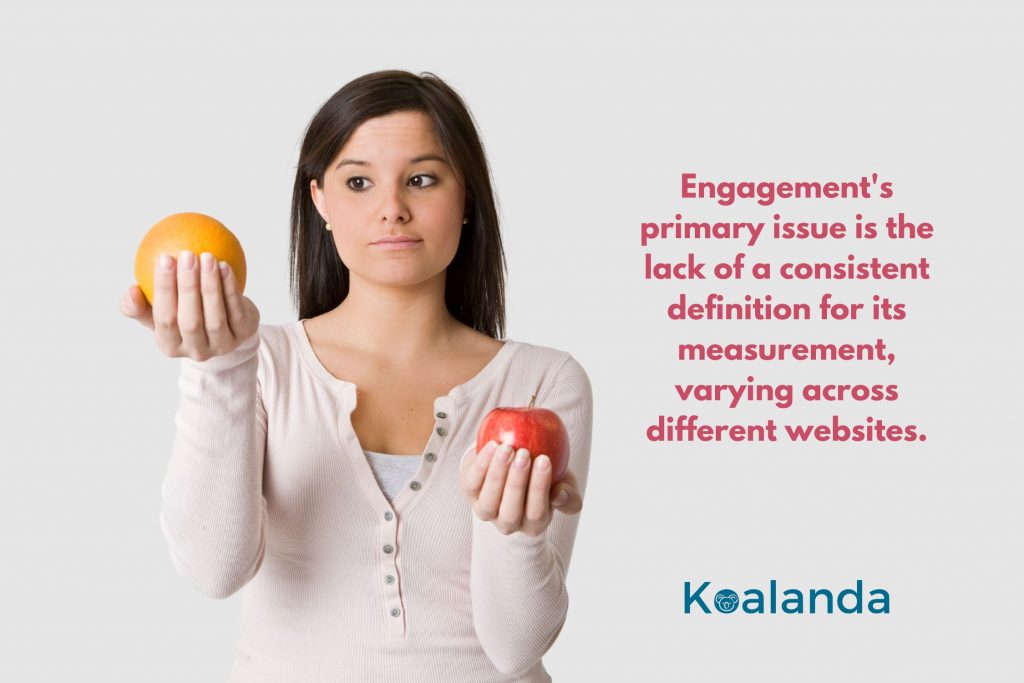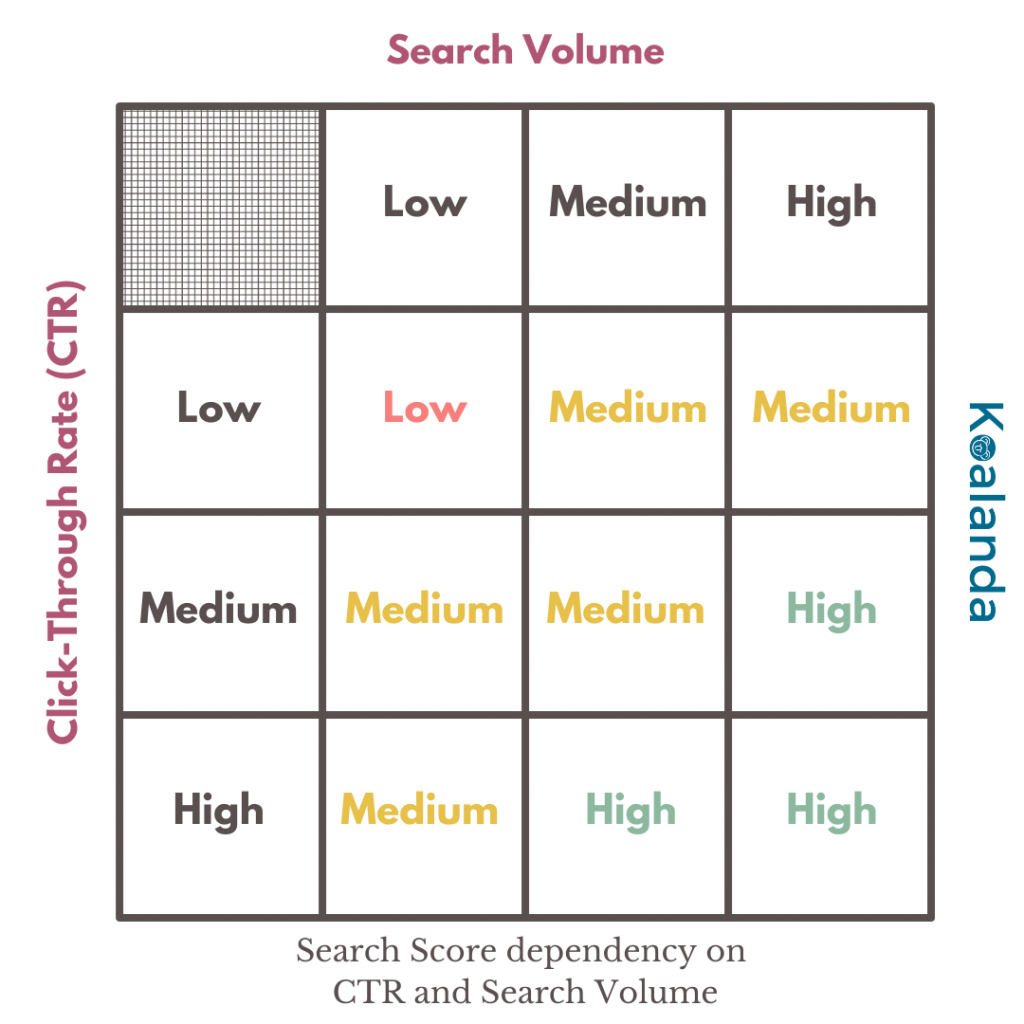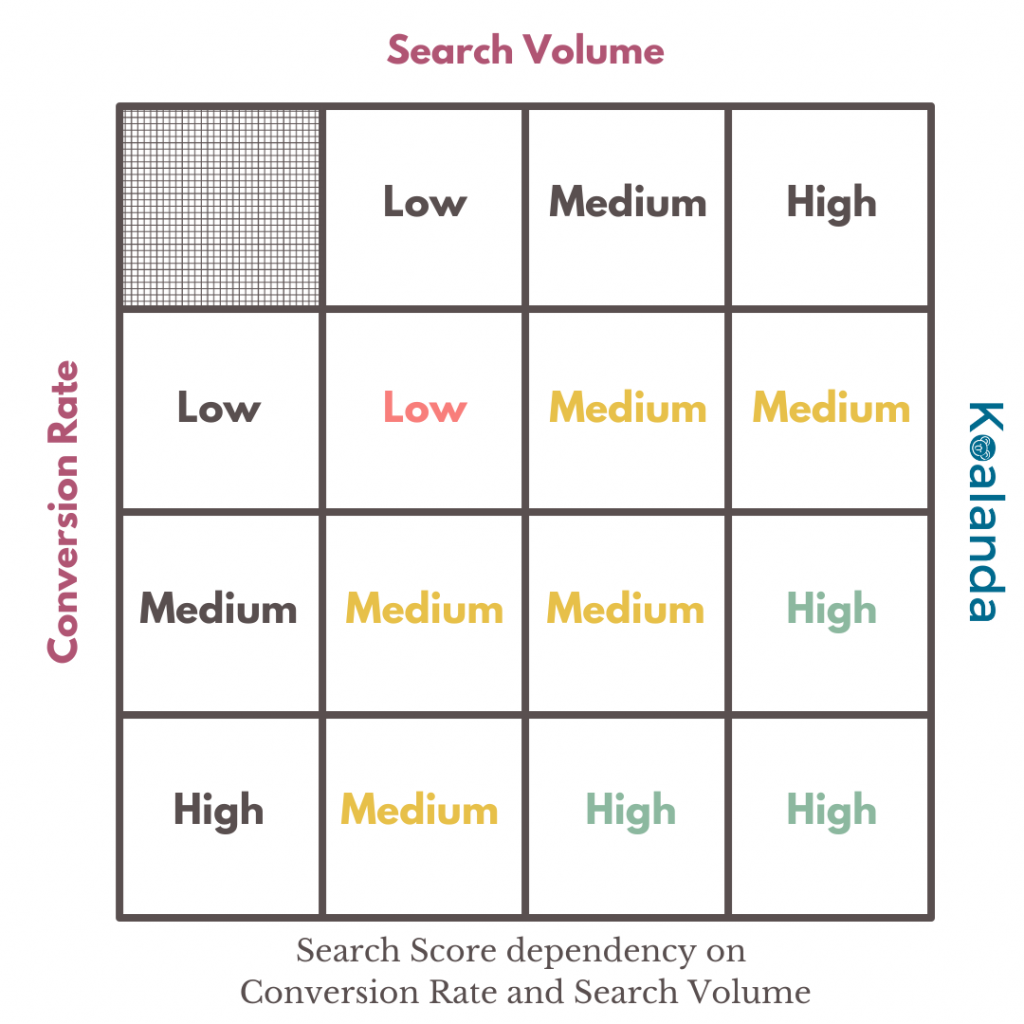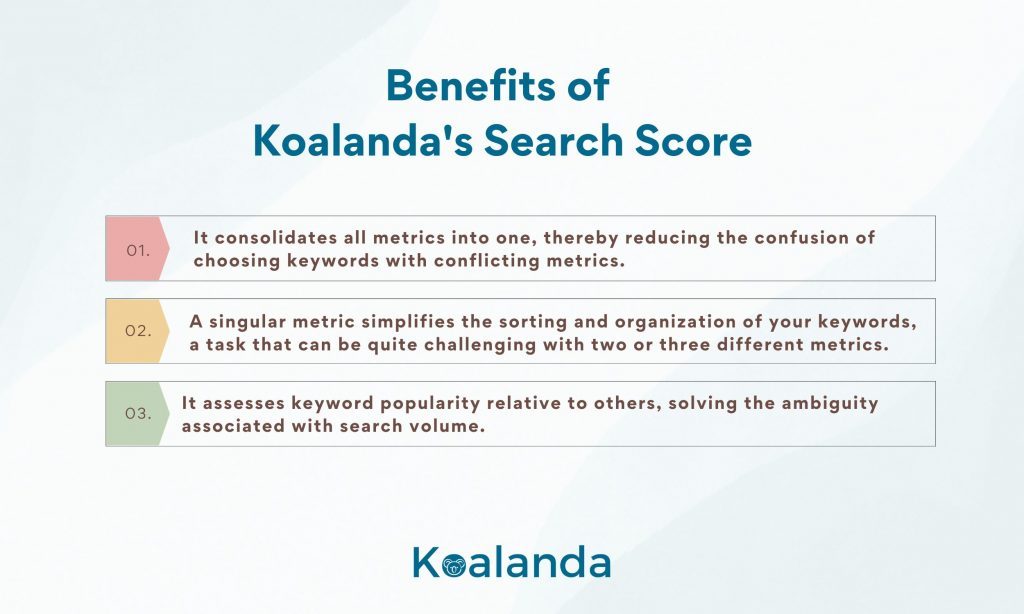In the dynamic world of online marketing, mastering Search Engine Optimization (SEO) is crucial for success. This article delves into the complexities of traditional Etsy SEO metrics and their limitations in guiding effective keyword strategies. Understanding the challenges these metrics present, we introduce Koalanda’s innovative solution: the Search Score. This new metric promises to transform how we approach Etsy keyword research, offering a more streamlined and intuitive method for selecting keywords that drive traffic and sales. Whether you’re a seasoned digital marketer or new to the realm of SEO, this exploration into Koalanda’s Search Score offers insightful perspectives on enhancing your online strategy.
Table of Contents
The importance of data-driven keyword research
Choosing the right keywords for your Etsy listings is central to Etsy SEO. This complex, time-consuming task is vital for your Etsy shop’s success. Mastering this process is one of the most crucial aspects of running your shop.
That’s why basing your Etsy keyword research on real data is so important. Guesswork is ineffective in today’s e-commerce environment. Considering Etsy takes days or even weeks to respond to changes in your listings, you can’t afford to spend endless time on trial and error.
Selecting effective keywords based on real keyword metrics has many benefits:
- It allows you to choose keywords that buyers are actively searching for.
- It helps in identifying related keywords that buyers might use to find your products.
- It enables you to pick keywords that are not overly used by other shops.
- Overall, it saves you valuable time.
Remember, the data must be Etsy-specific – keywords popular on Google or Amazon may not work because the audiences and markets differ. For example, “PlayStation 5” is a hot item on Amazon with many sellers, but it’s not a typical Etsy product and is not commonly searched for on Etsy.
Essential Etsy keyword research metrics
The performance of keywords can be measured in several ways. Here are the common metrics used by most Etsy keyword research tools.
The performance of keywords can be measured in different ways. Let’s explore the most common metrics used by the popular keyword research tools.

Search Volume
What it is: Search volume refers to the number of times a particular keyword or phrase has been searched for on Etsy over a specific period (usually 1 month).
Why it’s important: High search volume indicates there’s considerable interest in that product, making the keyword a potentially lucrative target. More people searching for a keyword means more opportunities for people to visit your listings.
Click-Through Rate (CTR)
What it is: CTR represents the percentage of users who click on a listing among all users who viewed the search results.
Why it’s important: A higher CTR suggests that searches with this keyword often return listings that are close to what the user is looking for. This is especially true for long-tail keywords when the user has narrowed down the search to a specific product. Keywords with high search volume are usually too generic and rarely have a high CTR.
Conversion Rate
What it is: The conversion rate is the percentage of visitors who purchase a listing that they have found using a specific keyword.
Why it’s important: This metric is somewhat related to CTR. It usually means that the keyword is so specific that the chances of the user finding the perfect product with it are high. Again, keywords with high search volume rarely have high conversion rates because they are too generic.
Engagement
What it is: Engagement is the percentage of users who interact with a listing among those who viewed the search results.
Why it’s important: Engagement is quite similar to CTR, differing in that it includes all interactions rather than only the clicks – listing clicks, favorites, shop opens. Its definition is not particularly consistent across various sources. It is important for the same reason as CTR.
Competition
What it is: Competition refers to the number of listings that are also targeting the same keyword. Essentially, this is the total number of search results on Etsy for the keyword (excluding Etsy ads and personalization).
Why it’s important: High competition can make it challenging to rank at the top of search results, while low competition might indicate an overall low demand.
The problem with the standard Etsy SEO metrics
The standard keyword metrics can be very useful in your data-driven keyword analysis. However, they have significant drawbacks that can make them inconvenient or even misleading. Let’s examine these issues.
The problem with search volume
The main issue with search volume is that it’s an absolute metric, not a relative one. For instance, if a keyword has a search volume of 1,000, how do you determine if it’s good or bad? While 1,000 may seem significant, consider the following:
- Are these 1,000 searches conducted by 1 million active buyers or by 100 million?
- Is this a generic keyword with high competition, like “jewelry,” or a long-tail keyword with less competition, like “rose quartz necklace”?
- If 1,000 is a significant search volume, is 100 also substantial? What is the right threshold?

The reality is that a search volume of 1,000 can be substantial or negligible, depending on these factors and more. To make an informed decision, you need more context that isn’t immediately apparent from the search volume alone.
The problem with click-through rate and conversion rate
CTR and conversion rate are somewhat easier to understand since they are measured with percentages, and higher values are generally better. You can also compare them to your shop’s conversion rate to discern good from bad rates.
Still, these metrics are not flawless. The main issue again is the lack of context. For instance, if a keyword has a 5% conversion rate, is it effective? It really depends on its search volume. A 5% rate with a search volume of 10,000 is likely good, but with a volume of 100, it might not be. Determining what constitutes a good search volume for a given CTR is challenging.
The problem with engagement
Engagement’s primary issue is the lack of a consistent definition for its measurement, varying across different websites. This inconsistency makes it unreliable for interpretation. Like CTR and conversion rates, engagement also requires context to be useful.

In summary, the major deficiency of these metrics is their lack of context – none are reliable enough to stand alone. You need to consider multiple metrics simultaneously to draw conclusions about a keyword. And when metrics contradict each other, such as high search volume but low CTR, it can be confusing and potentially misleading, wasting your time and effort.
The Koalanda Search Score explained
The limitations of the classic metrics discussed earlier led our team at Koalanda to develop our own metric designed to address these issues. We named this metric the “Search Score” of the keyword. Its primary purpose is to provide a single, easily interpretable number: the higher the search score, the greater the likelihood of making a sale with that keyword.
The Search Score functions by combining all the classic metrics into one. While the precise definition of this metric, based on statistical and machine learning algorithms, is beyond this article’s scope, its basic concept is straightforward, as illustrated in the two tables below.


The Search Score ranges from 0 to 100, with higher scores being more desirable. It offers several benefits:
- It consolidates all metrics into one, thereby reducing the confusion of choosing keywords with conflicting metrics.
- A singular metric simplifies the sorting and organization of your keywords, a task that can be quite challenging with two or three different metrics.
- It assesses keyword popularity relative to others, solving the ambiguity associated with search volume. Here, 5 is low, 25 is good, 75 is great, and 100 is outstanding – it’s as simple as that.

Don’t overlook keywords with a low Search Score. Naturally, if you have better options, prioritize those. However, a Search Score as low as 5 can still be effective if the keyword is targeted and relevant to your product.
You can learn how to use the Koalanda Search Score for your shop in our keyword research video tutorial:
Conclusion
In conclusion, this article sheds light on the limitations of traditional SEO metrics and introduces Koalanda’s Search Score as a more holistic and practical solution. By simplifying the process of keyword analysis and selection, this innovative metric aids in making informed, data-driven decisions, paving the way for enhanced SEO strategies and online success.





